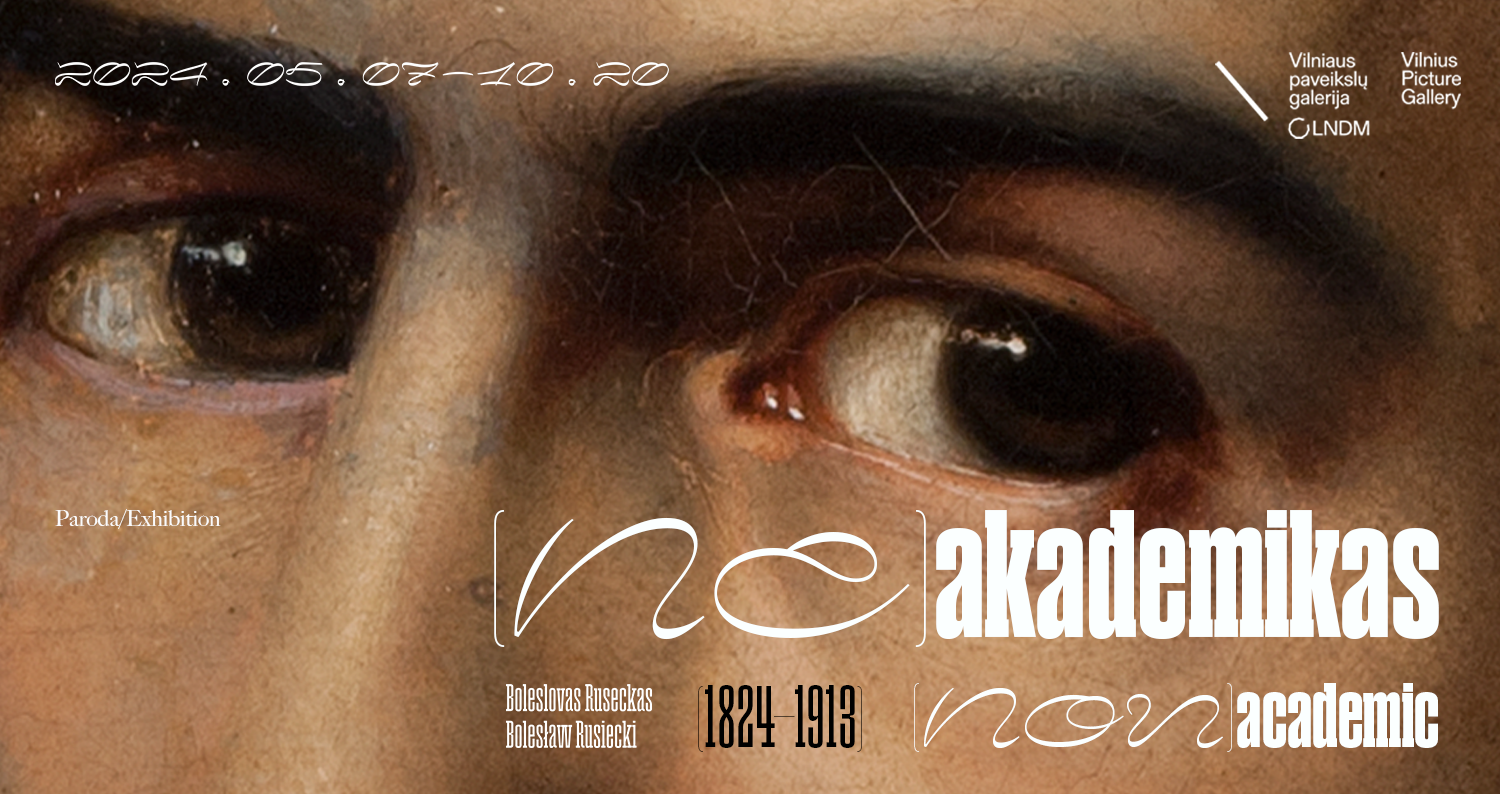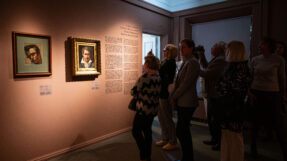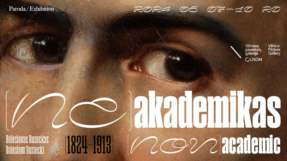(Non)academic. Bolesław Rusiecki (1824–1913)
7 May – 20 October, 2024
 Bolesław Rusiecki (1824–1913) was a talented, multifaceted and undeservedly forgotten artist. Celebrating the 200th anniversary of his birth, Vilnius Picture Gallery presents a retrospective of his life and work across eight exhibition halls. The visitor is introduced to the artist’s personality, the beginning of his creative path, his studies in St Petersburg, the Italian period, the search for creative solutions and its results, the public, private and creative milieu, the accumulated rich collection of paintings and memory objects.
Bolesław Rusiecki (1824–1913) was a talented, multifaceted and undeservedly forgotten artist. Celebrating the 200th anniversary of his birth, Vilnius Picture Gallery presents a retrospective of his life and work across eight exhibition halls. The visitor is introduced to the artist’s personality, the beginning of his creative path, his studies in St Petersburg, the Italian period, the search for creative solutions and its results, the public, private and creative milieu, the accumulated rich collection of paintings and memory objects.
Rusecki saw inspiration and beauty that, in his own words, ‘he would like to swallow with his eyes,’ everywhere: in the face of his beloved, in the figures of the Italian peasants, in the Vilnius courtyards, and in the foliage of the old forest. He breathed art. Even after closing the doors of the studio, he delved into the history of art, especially admiring the old Italian masters, the works of the Nazarenes; he was considered by his contemporaries to be the best expert of the Vilnius Art School, often perceived as a Professor. Rusiecki collected information about his favourite authors and artworks, gathered their photographs.
However, looking at the artist’s creative legacy, letters, and everyday signs, a tension emerges that was probably impossible to avoid. Raised from a young age by a loving father, one of the most famous Lithuanian painters of the 19th century, Kanuty Rusiecki (1800–1860), Bolesław found it difficult to escape from the authority’s shadow. The painter’s relationship with the academic career, which he so desired, was also ambiguous. Rusiecki can be considered a representative of the Academic art movement when his education and the notion of personal art are taken into account, however, his efforts to earn the title of academician always ended in failure, and the multi-figure compositions, typical for academicians, felt exhausting. On the other hand, as soon as he broke away from the strict rules, into which he often squeezed himself, his creative flair was unleashed and he experienced great pleasure in creating landscapes or small-scale portraits, light, lively sketches. He could have become a great landscape painter.
This combination (or perhaps conflict) of academic and unrestricted, sensitive hand, life challenges and experiences formed an interesting, multifaceted artist, who undoubtedly deserves close attention and evaluation.
Organiser: Vilnius Picture Gallery of the LNMA
Exhibition curators: Aistė Bimbirytė, Gabija Kasparavičiutė-Kaminskienė, Dalia Tarandaitė, Joana Vitkutė
Architecture: MOA
Designer: Elena Kanarskaitė
Project financed by: Ministry of Culture of the Republic of Lithuania
Information partner: LRT Plius
Sponsor: Audėjas
Partners: The Wroblewski Library of the Lithuanian Academy of Sciences, Lithuanian National Museum, Krakow National Museum, Lithuanian State Historical Archives, Dr Jaunius Gumbis, M. K. Čiurlionis National Museum of Art
- Follow the link to read more about the exhibition
- Click here to buy an e-ticket for the exhibition
- Plan your visit
- Book a tour in English: +370 5 261 1685, gidai.vpg@lndm.lt
4 Didžioji st, Vilnius, Lithuania
+370 5 261 1685
vpg@lndm.lt















